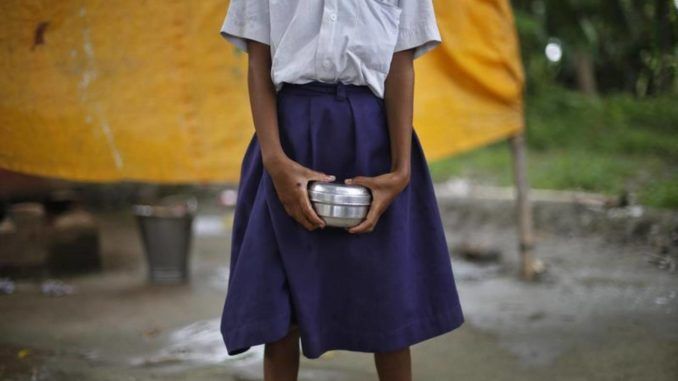
Police say they have widened an investigation to include the possible murder of a girl at a ‘care home’ in eastern India, where 34 young girls were raped and tortured.
A seven-year-old was the youngest to be raped at the children’s shelter in India’s Bihar state.
Most of the victims were under 12 years old and the oldest was 18.

BYPASS THE CENSORS
Sign up to get unfiltered news delivered straight to your inbox.
You can unsubscribe any time. By subscribing you agree to our Terms of Use
44 children lived at ‘Seva Sankalp Samiti’, a short-stay shelter for girls who had run away from home or had been rescued from the streets.
Several people have been arrested including a child protection officer, a member of the government’s social welfare department and the head of the care home who is accused of leading abuse, which included beating, drugging and scalding girls with hot water.
Al Jazeera reports: One of the accused has absconded, police said.
The girls’ testimonies were heard on July 27 at a special court for cases related to India’s Protection of Children from Sexual Offences (POCSO) Act. The POCSO law was amended in April to introduce the death penalty for the rape of children younger than 12 years old.
The abuse at Seva Sankalp Samiti came to light after a government-commissioned report in April into Bihar’s 110 NGOs by the Tata Institute of Social Sciences. The report found “grave instances of violence” at the shelter and recommended a prompt investigation.
The vast majority of allegations have been made against Thakur, who is said to have led the abuse, stripping the girls naked, beating them with sticks and belts and injecting them with sedatives so that he and others could sexually assault them.
Beaten, drugged, raped, scalded with hot water
The girls’ statements to police paint a grim picture of a pattern of abuse.
The seven-year-old child told police she was beaten regularly by Brajesh, whom the girls referred to as “hunterwala uncle”, or the uncle with the whip.
A 10-year old girl said she would wake in the morning to find her clothes strewn on the floor after being drugged in the night, and complained of a soreness between her legs.
One girl said she was regularly stripped naked, taken to the terrace and beaten with a stick.
Another said her abuser threw hot water over her to force her to take drugs that other girls said made them sleepy.
When one girl tried to push back against the abuse, she was starved for days and later apologised for resisting.
Some were hit while trying to reject rape, according to the girls’ statements to police.
It is not clear when the abuse took place, or for how long, but the girls said sexual assault was routine during their stay. Some lived at the home for up to three years.
Several self-harmed.
“The girls had cut themselves on their hands with glass in frustration and despair during this cycle of abuse,” said a spokesperson at Bihar women’s commission, whose members visited the girls on Saturday, and are preparing a report for the government.
The shelter was closed last month following the arrests.
The list of men accused includes a child protection officer and a member of the government’s social welfare department.
“We are very confident that we have sufficient evidence to prosecute the guilty. We have gathered medical reports that indicate sexual violence, we have the girls’ statements,” Harpreet Kaur, senior superintendent of Muzaffarpur police, told Al Jazeera. “The structure of the shelter indicates something foul, something very serious was going on there.”
She said there were staircases from the garage to the second floor, where the girls lived, alluding to efforts to create a concealed space to carry out acts of sexual violence.
“It looks like many of the rules of running a girls’ shelter have been violated there,” she said.
A board of doctors at Patna Medical College and Hospital in the state capital confirmed that most of the girls living at the shelter had been sexually assaulted.


